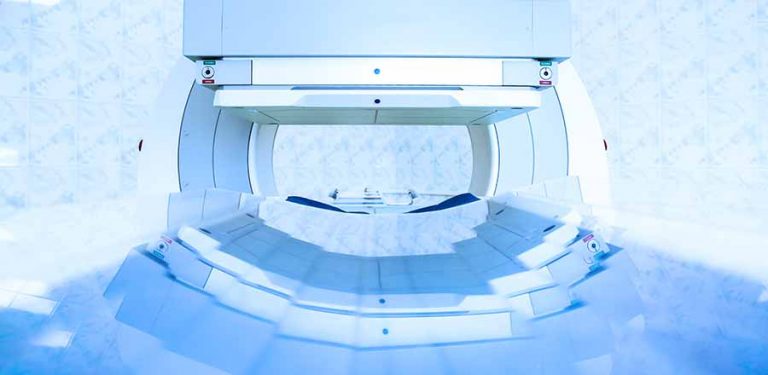Alisha Coates talks about medical physics
- Programme
- STP
- Role
- Alumni
After achieving the MSc Clinical Sciences (Imaging with Ionising Radiation) at Newcastle University, while part of the NHS Scientist Training Programme (STP), Alisha secured a role as clinical scientist (nuclear medicine and PET physics) at Royal Stoke University Hospital.
How did you get your job as a clinical scientist?
I initially studied A-levels in physics, maths, biology and dance, which led to me choosing the BSc Physics at Nottingham Trent University. During my degree, I did a couple of weeks work experience in the medical physics department in my local hospital. I then knew that this was an area I’d like to pursue. After graduating I secured a post on the NHS STP specialising in imaging with ionising radiation, where I trained for three years on the job at Nottingham University Hospitals NHS Trust while studying part time for a Masters degree at Newcastle University.
During the first year, I rotated around different areas of medical physics (radiation safety, nuclear medicine, diagnostic radiology, MRI, ultrasound, UV and lasers, and radiotherapy). I then opted to specialise in ‘imaging with ionising radiation’ where I trained further in nuclear medicine and diagnostic radiology. After qualifying, I landed my current role as a clinical scientist (physicist) in nuclear medicine and PET (positron emission tomography)/CT (computerised tomography).
What does the role involve?
I work in nuclear medicine within an NHS hospital, which uses small amounts of radioactive materials as tracers to diagnose or treat disease. Radiation is detected by a special type of camera called a ‘Gamma camera’. It provides visual information about the area of the body being imaged, by looking at the pattern of tracer-uptake, often identifying abnormalities in the early stages.
My role covers many areas, including testing of the cameras and equipment, ensuring the department is adhering to radiation safety legislation, implementation of methods for acquiring images, and carrying out research and development. I also work with molecular radionuclide therapies (for both benign and malignant treatment), which include calculating the activity and assessment of radiation dose to the target and critical organs.
What do you enjoy most about your job?
It’s using science to benefit patients – whether that’s from diagnosing underlying health problems or treating diseases using radiation. I may not always be directly involved with patient care, but my work will have an effect. Healthcare scientists are involved in around 80% of clinical decisions. STEM (science, technology, engineering and maths) is a constantly changing field with new research and technology being introduced all the time, so I love the fact my job is so varied with every day bringing new challenges.
How has your role developed and what workplace issues are you most passionate about?
My role is constantly developing as new technology and medicines are being introduced. I’m very passionate about optimising imaging scans in the sense of getting the balance right in reducing the radiation dose to patients while ensuring good image quality and a quick processing time. I also have a strong interest in up-and-coming radionuclide therapy treatments that can help patients overcome their illnesses.
This profile was supplied by the graduate careers organisation Prospects. Click this link to read the full profile on the Prospects website (expired link).
